Part of my motivation to become a babywearing consultant was to help make babywearing safety principles better understood throughout our community. You may ask why is babywearing safety so important? Yes, babywearing is *generally* safe, regardless of how comfortable you or your baby might be or what carrier you are using. But we don't want any baby to become a rare statistic, and knowledge is power. So let's help parents and carers become confident and safe baby wearers, naturally.
Why do we recommend following the TICKS babywearing safety guidelines in Western culture? It is simple to remember the basic steps to follow each time you wear a child in any carrier, regardless of whether it is a wrap, ring sling, meh dai, or buckled carrier.
Infographic: TICKS guide to safe babywearing, a summary by Alyce Mostert.
TICKS GUIDE TO BABYWEARING SAFETY
*T = TIGHT:
If your carrier is not tight enough, your baby could slump into a dangerous position with their chin on their chest, which can cause asphyxiation. Always ensure all buckles are fastened as per manufacturer instructions, and straps or wraps are tightened evenly and firmly.
*I = IN VIEW:
You should always be able to see your baby's face whilst they are in the carrier without having to remove any fabric, including hoods or muslin wraps. This is relevant for both front and back carrying. Sun protection can be provided by using one side of the hood (keeping the face clear) or the use of an umbrella or a large, wide-brimmed hat on the wearer's head. Placing a hat directly on baby's head can cause overheating as this is a primary source of heat redistribution for babies and young children. It is also worthwhile noting that a sleeping baby should not wear a hat or have their face covered by any fabric at any time, due to the risk of overheating causing SIDS/SUDI [Red Nose].
*C = CLOSE ENOUGH TO KISS:
If your carrier is not high enough, you can't feel your child breathing on you and you can't see their face properly, and therefore you might miss if they have a breathing issue. An easy way to ensure your child is high enough is to check that you can kiss them on the top of the head (or gently nudge their forehead with the back of your head in a back carry).
*K = KEEP THE CHIN OFF THE CHEST:
A firmly fitted, correctly adjusted carrier with adequate neck support helps to ensure that there is always a 2cm distance between your child's chin and their chest. This is important to avoid slumping and asphyxiation. An infant's airway is small and flimsy, and can easily close off if the neck is too far flexed or extended, so supporting the back of the neck appropriately is also important for airway safety.
*S = SUPPORTED SPINE AND HIPS:
If your baby's spine and body is not well supported (from neck to bottom vertically, and knee to knee horizontally) there may be an increased risk of asphyxiation, along with the risk of exacerbating pre-existing conditions like developmental dysplasia of the hips (DDH). The carrier should be appropriately sized for your child's physical size and strength, and it should be adjustable to ensure it can grow with your child, because we all know they change quickly!
Photo: A white couple are posing with their young baby. The woman is wearing the baby in a peach coloured full buckle carrier, called 'Switch' by Neko Slings.
Other important babywearing safety tips:
- Your child should always be upright inside a carrier, regardless of their age or the style of carrier used. Cradle carry is not recommended as it is virtually impossible to keep the chin off the chest, it is inherently difficult to keep baby's face in view and this technique does not allow baby to be worn at an appropriate height for safe monitoring. This is also important when breastfeeding whilst babywearing. Your child should be adequately supported by the entire carrier, firmly and evenly, whilst breastfeeding upright in a carrier, and a level of attentiveness is important to ensure their airways remain open. As soon as your child stops feeding and/or falls asleep at the breast they should be repositioned to a safe position (high and tight).
- Peanut shell or padded rail slings are generally not adjustable, and do not allow a young baby to be worn upright. If you cannot adjust your sling to adequately support your baby's entire body there is no way of ensuring they are safe in that carrier, and asphyxiation is a significant risk. These styles of carrier are readily passed on from well-meaning friends and family, and whilst they can be used for safe, upright toddler wearing, you would generally both find greater comfort in an adjustable toddler carrier or wrap. These styles of sling can often be donated to wildlife rescue and veterinary services to assist with caring for injured and orphaned animals.
- Always check the integrity of the carrier prior to every use, including seams, straps and buckles, prior to use. If damaged, contact the retailer or manufacturer for advice on appropriate measures to take for warranty, repair or disposal.
- Forward facing is a whole other topic in itself, and it can absolutely be done safely, but in a brief safety summary it is important to ensure that a baby worn "world facing" is physically and developmentally able to support their body in an upright position without assistance (for example, pushing themselves from a horizontal to seated position and maintaining that seated position). It is significantly harder to monitor their airways and non-verbal communication cues when wearing a baby outward facing, so ensuring that they are strong enough to support their heavy little head above their own body is important to avoid asphyxiation. The baby should be tall enough to fit in the carrier whilst facing outwards without any of their face being impeded by the carrier (including the chin and mouth). And most importantly, if your child falls asleep whilst facing outwards, they must be turned inward facing immediately as there is no safe way to ensure that their airways are supported at all times whilst they are facing away from your body.
If you have any questions or concerns please do not hesitate to contact me for advice, or book a consult to get individualised and in-depth fit and safety advice to keep your family safe, comfortable and close.
Alyce Mostert is a Babywearing Consultant and Peer Educator at alycemostert.com.au, owner of Australian babywearing e-retailer Cloth and Carry, and mother of three.



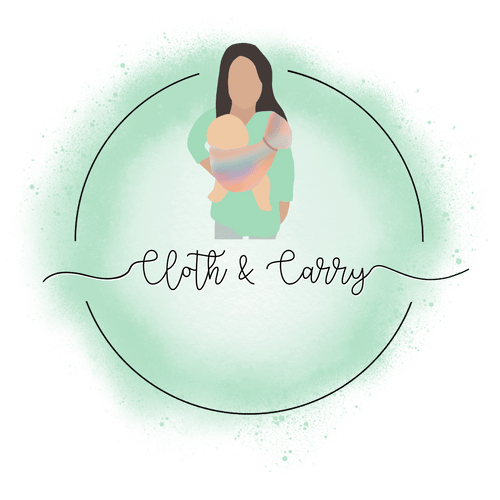



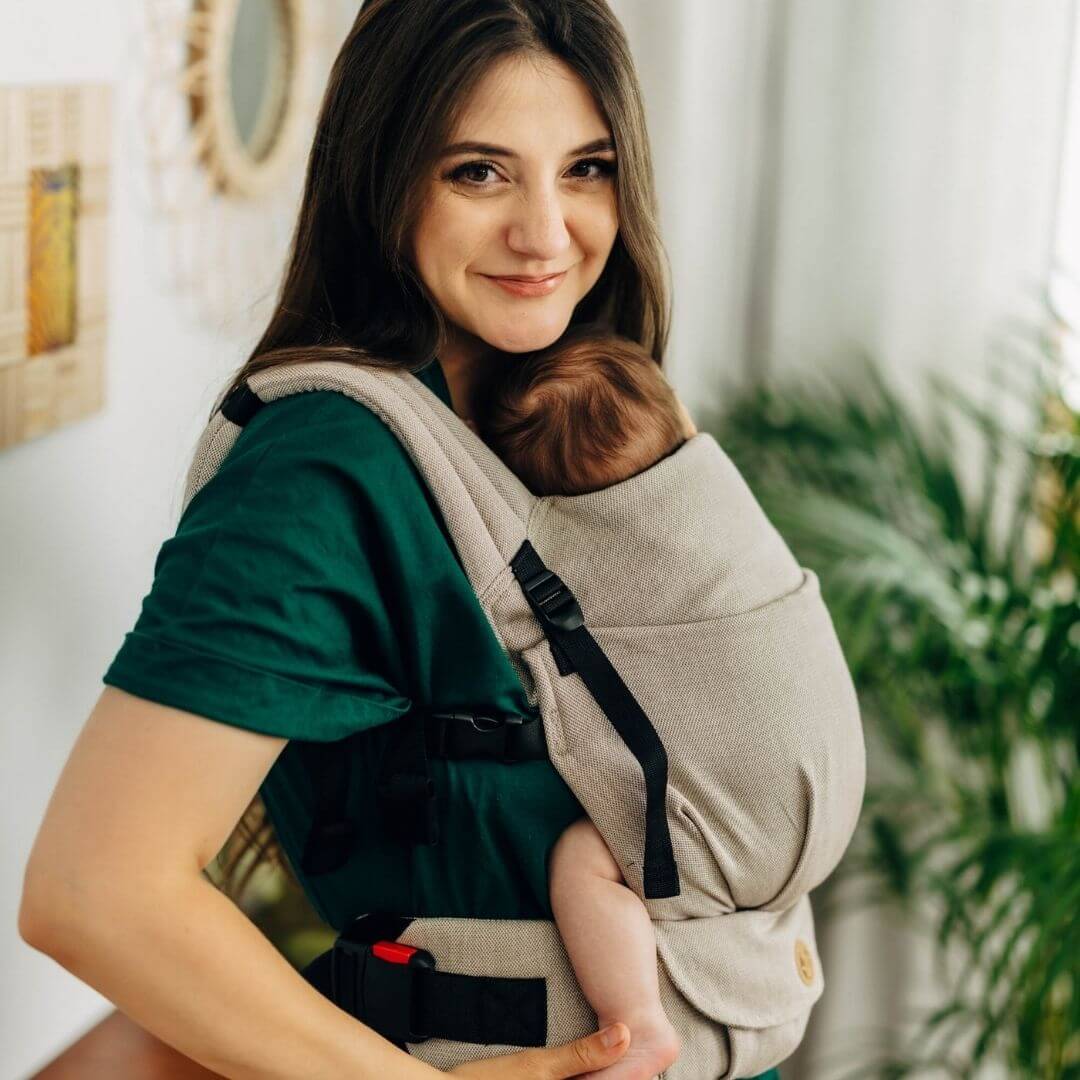

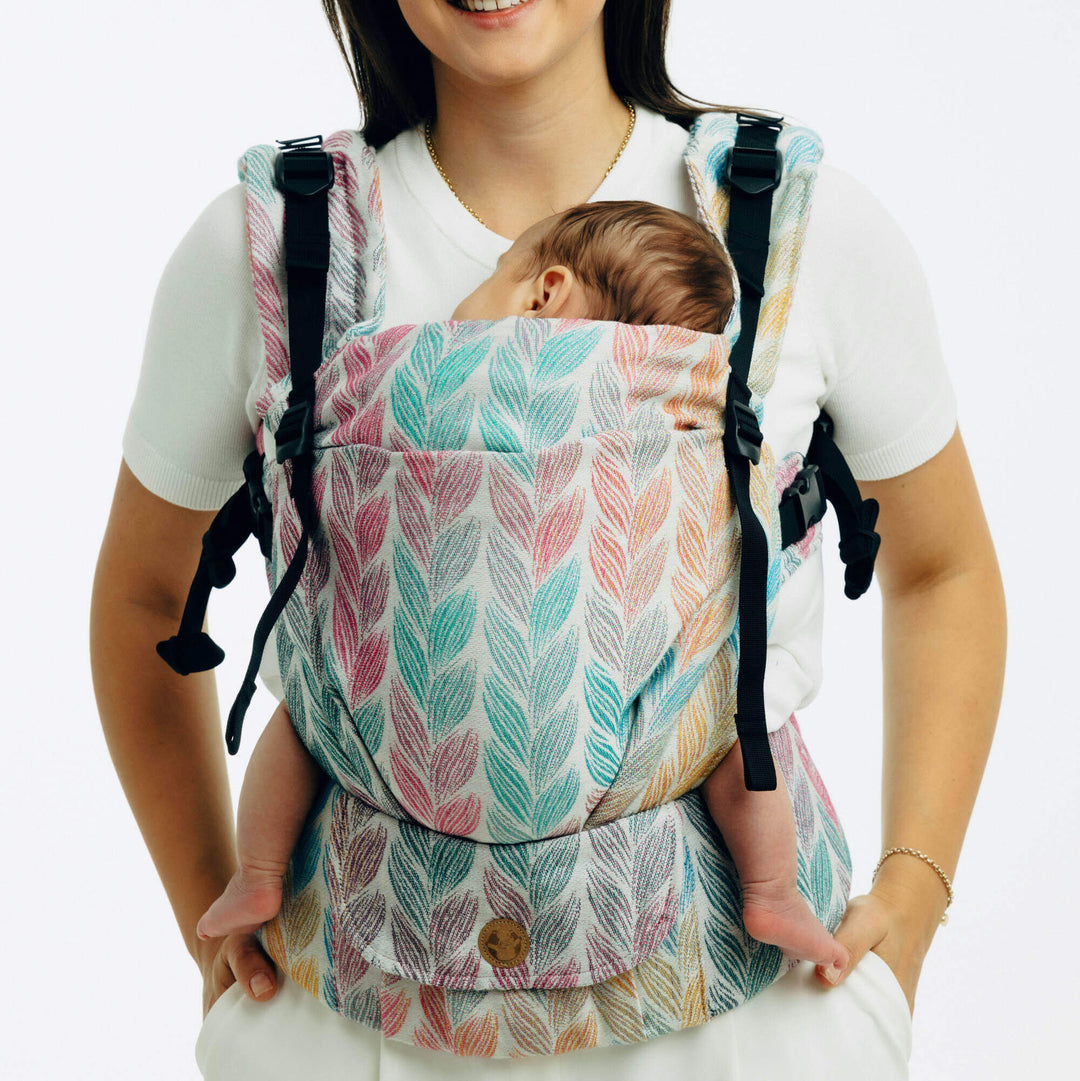
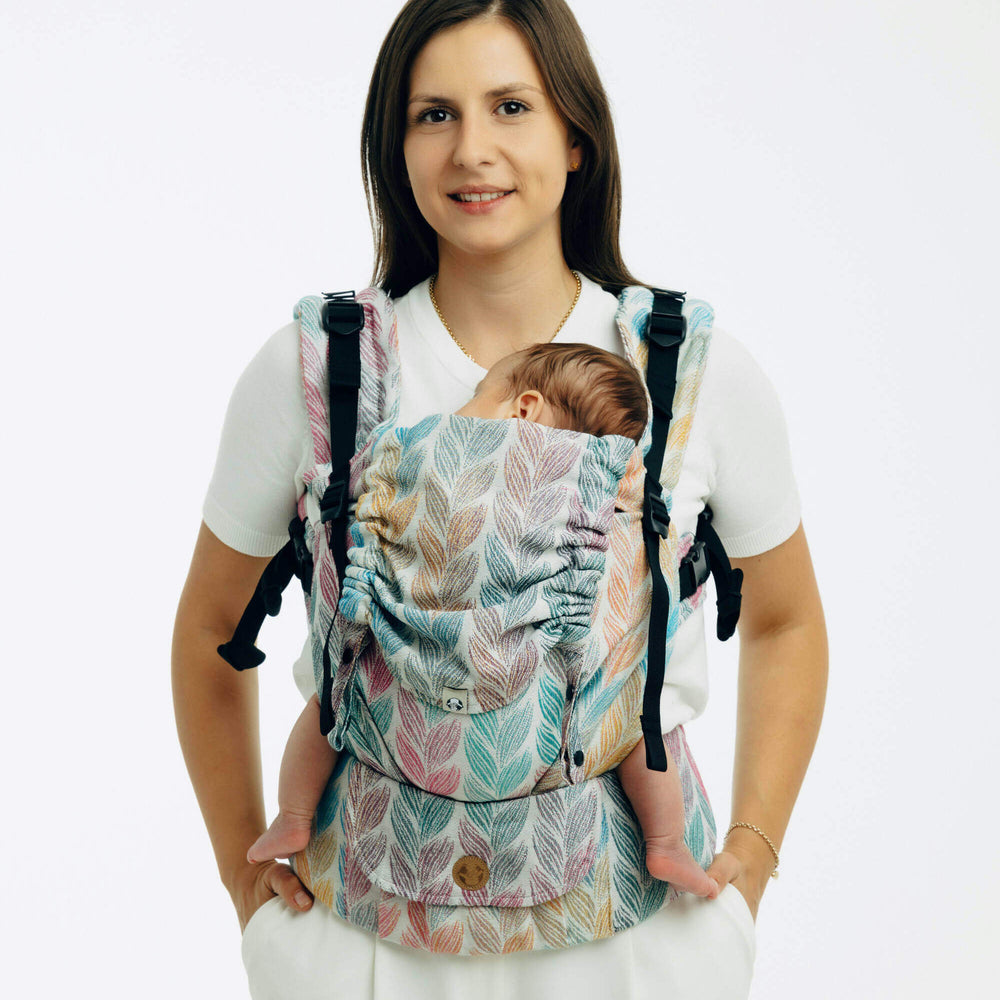
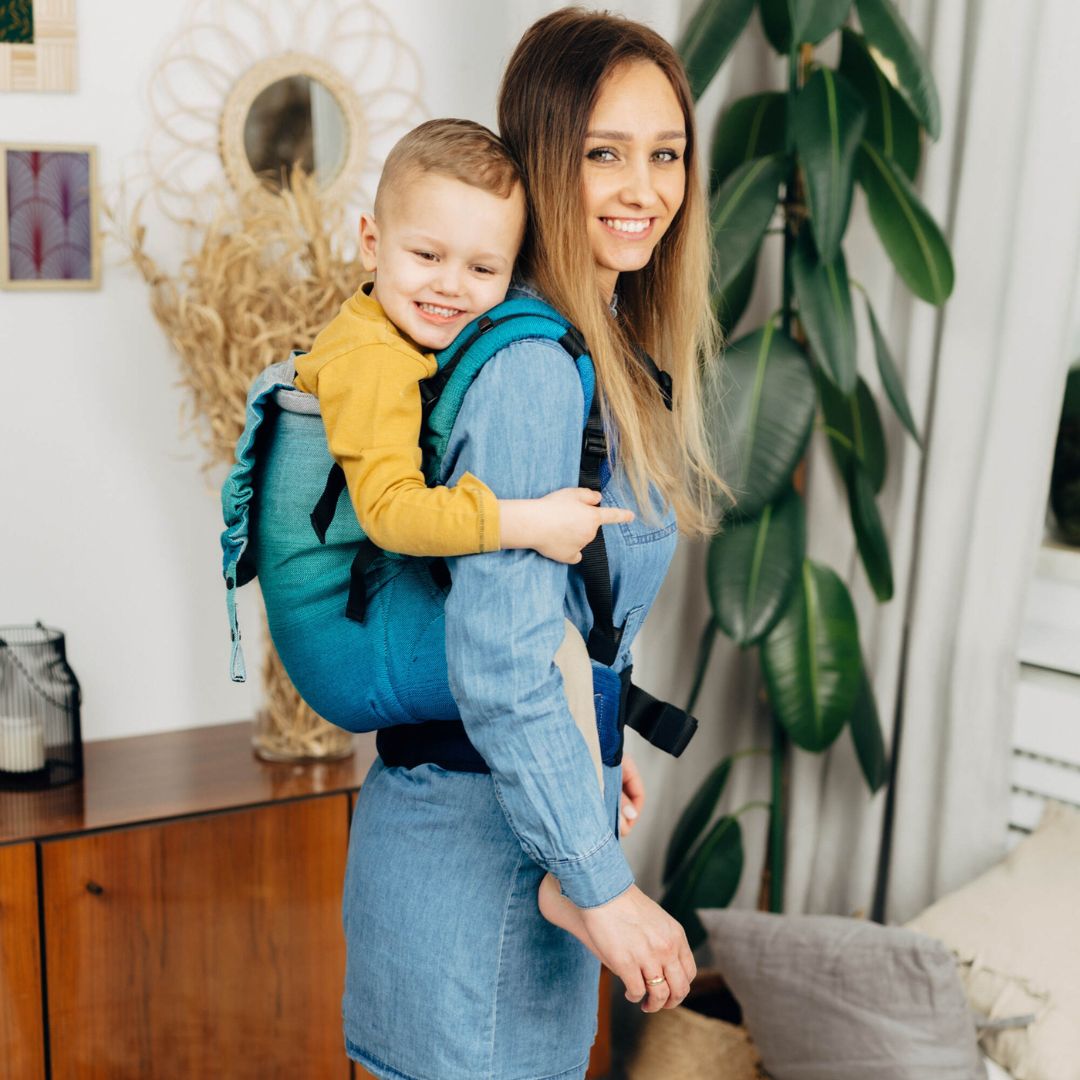
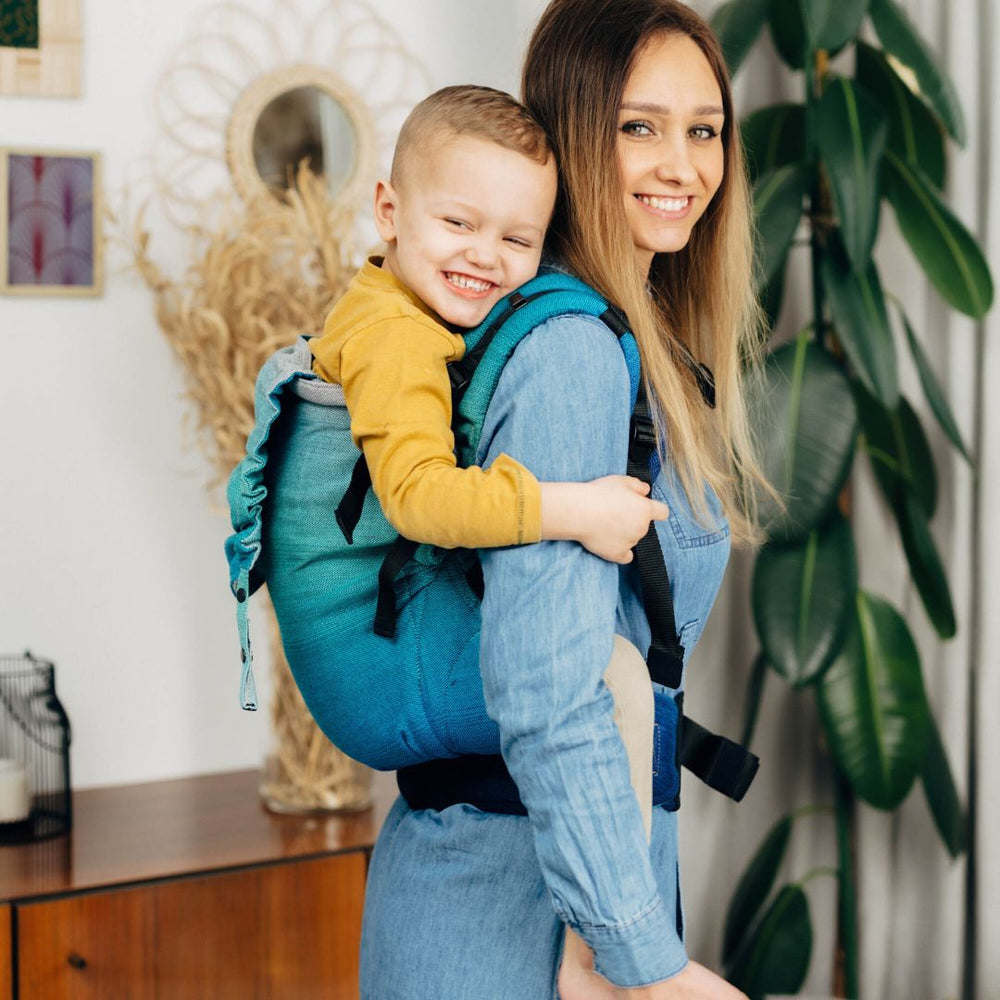

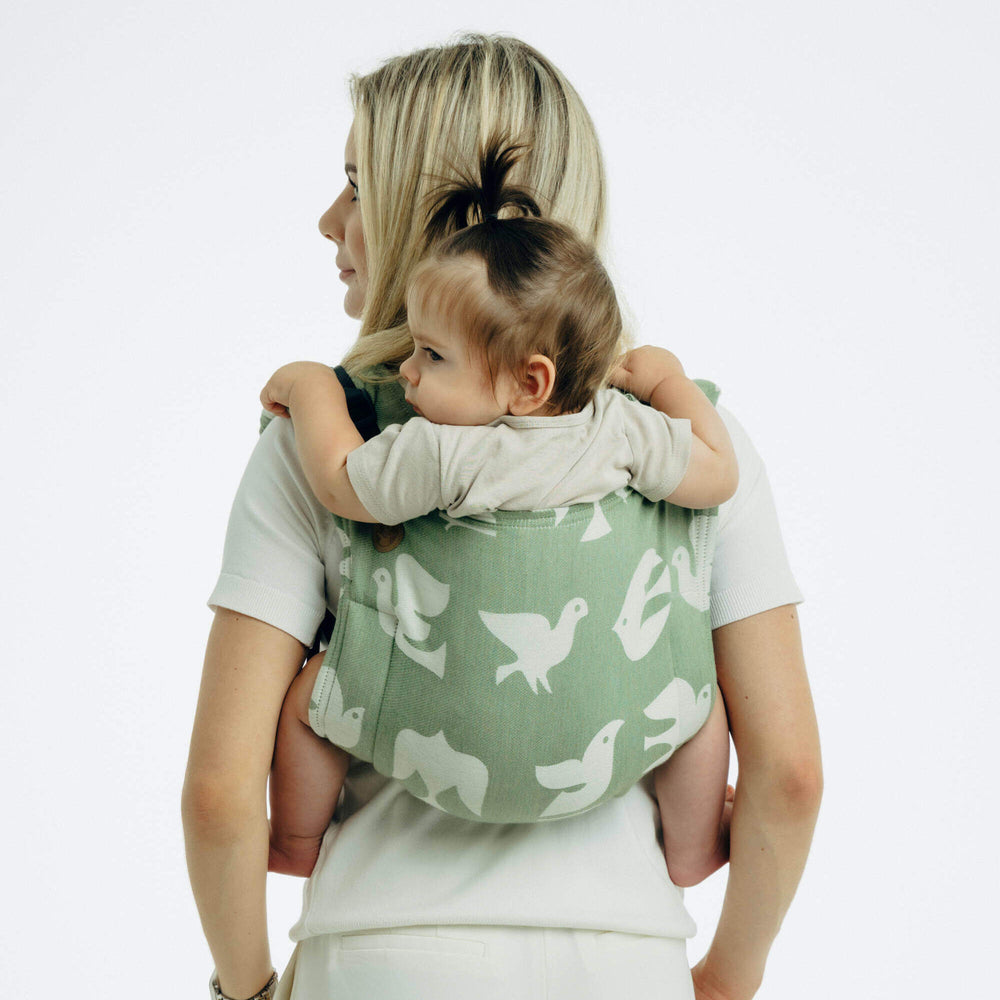

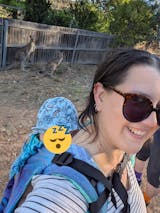
Leave a comment